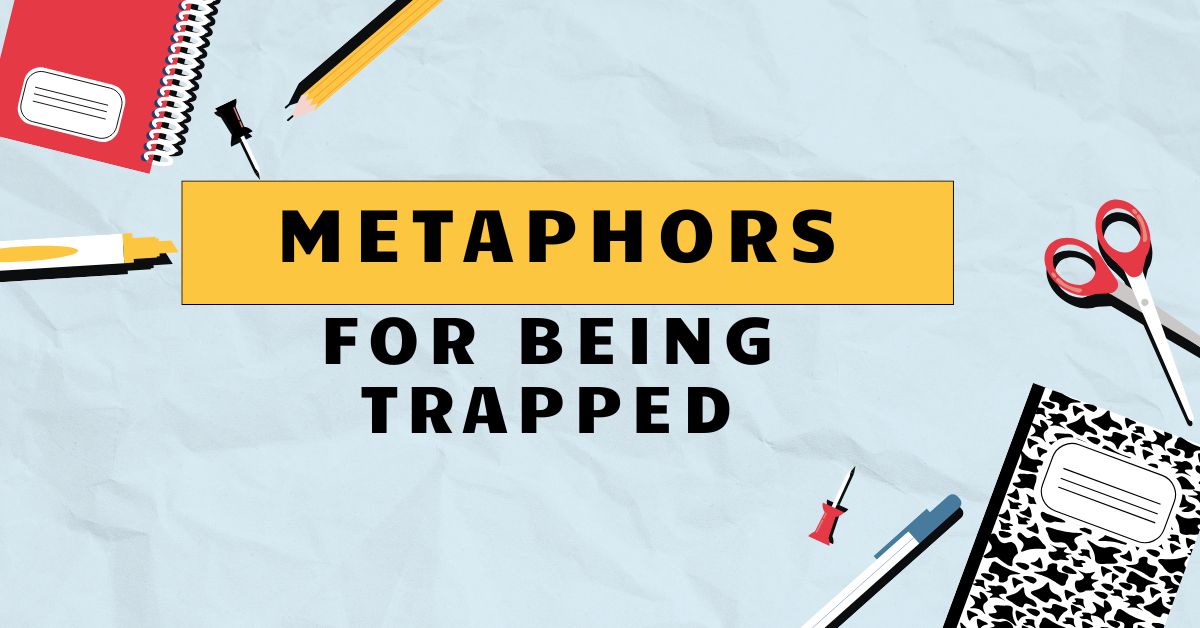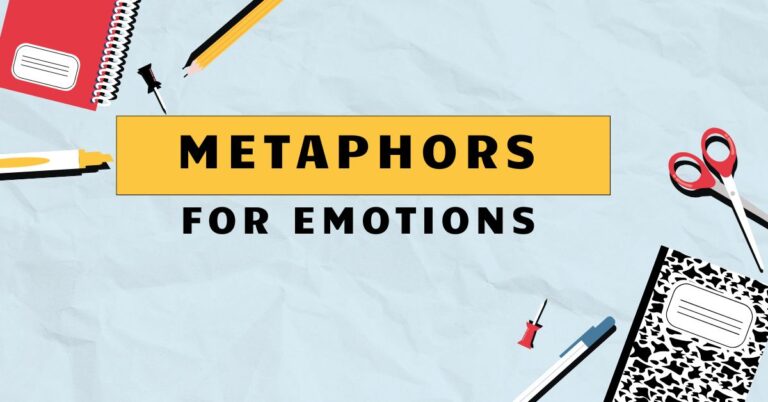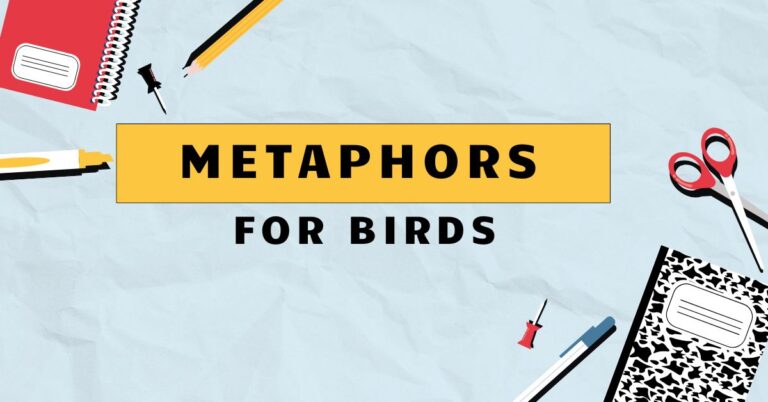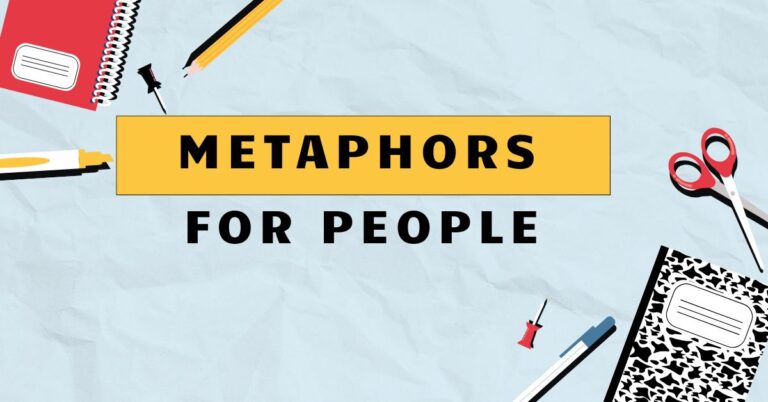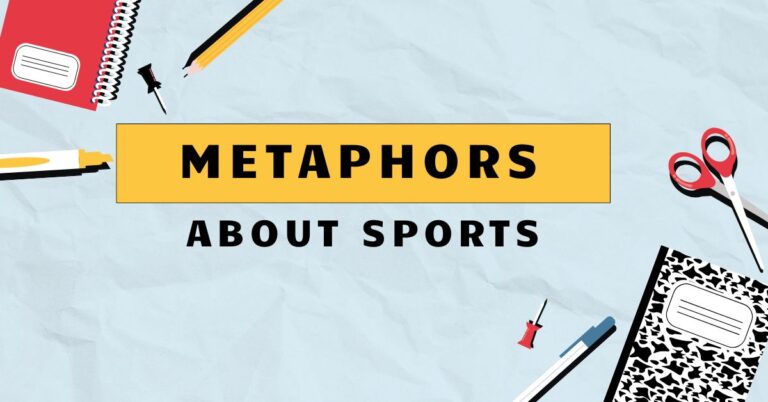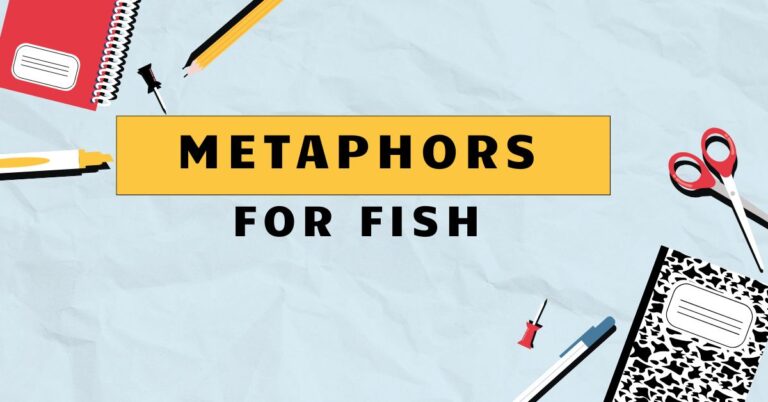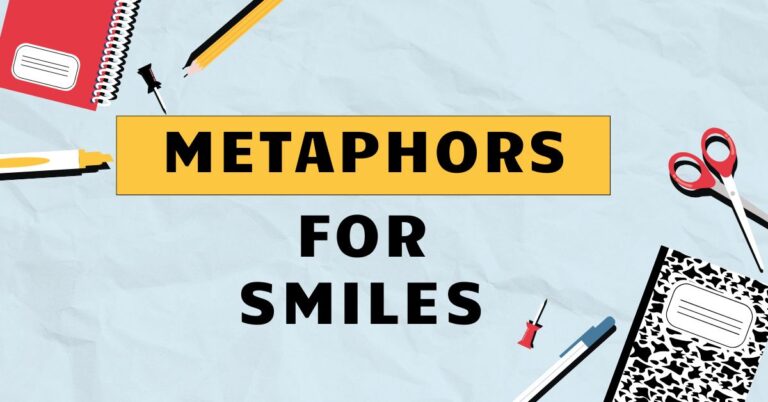33 Metaphors for Being Trapped: Understanding Figurative Language
Metaphors are powerful tools in the English language, allowing us to express complex emotions and situations in vivid and relatable ways. When describing the feeling of being trapped, metaphors can be particularly effective, conveying the sense of confinement, powerlessness, and lack of freedom.
Understanding these metaphors enriches our comprehension of literature, improves our writing, and enhances our ability to empathize with others. This article explores the various metaphors used to describe the feeling of being trapped, providing examples, usage rules, and practice exercises to help you master this important aspect of figurative language.
Students of English literature, creative writers, and anyone looking to improve their expressive abilities will find this guide invaluable.
Table of Contents
- Introduction
- Definition of Metaphor for Being Trapped
- Structural Breakdown of Trapped Metaphors
- Types and Categories of Trapped Metaphors
- Examples of Metaphors for Being Trapped
- Usage Rules for Trapped Metaphors
- Common Mistakes When Using Trapped Metaphors
- Practice Exercises
- Advanced Topics in Trapped Metaphors
- Frequently Asked Questions
- Conclusion
Definition of Metaphor for Being Trapped
A metaphor is a figure of speech that directly compares two unrelated things without using “like” or “as.” It asserts that one thing *is* another, creating a new understanding of the first thing by associating it with the second. In the context of “being trapped,” a metaphor uses imagery and associations related to confinement, restriction, and lack of freedom to describe a situation, feeling, or state of mind.
These metaphors function to add depth, emotion, and vividness to the description, allowing the audience to better grasp the sense of powerlessness and constraint.
Metaphors for being trapped can be classified based on the type of confinement they represent: physical, emotional, situational, or mental. The function of these metaphors is to evoke a sense of claustrophobia, helplessness, or despair.
The context in which they are used can vary widely, from literature and poetry to everyday conversation. Understanding the nuances of these metaphors allows for a richer and more effective communication of the experience of feeling trapped.
Structural Breakdown of Trapped Metaphors
The structure of a metaphor for being trapped typically involves two key elements: thetenorand thevehicle. The tenor is the subject being described (the feeling of being trapped), and the vehicle is the image or concept used to represent it (e.g., a cage, a web, quicksand).
The effectiveness of the metaphor lies in the relationship between the tenor and the vehicle. A strong metaphor will create a resonant connection between the two, highlighting the similarities and evoking the desired emotional response.
The pattern of a trapped metaphor often follows a simple equation:A is B, where A is the feeling of being trapped and B is the metaphorical representation. For example, “His mind was a prison” directly equates his mental state to a prison, conveying the sense of confinement and lack of freedom.
The power of the metaphor comes from the implied qualities of the vehicle (prison), such as walls, bars, and restricted movement, which are then associated with the tenor (his mind). Understanding this structural breakdown helps in both interpreting and creating effective metaphors for being trapped.
Types and Categories of Trapped Metaphors
Metaphors for being trapped can be categorized into several types, each reflecting a different aspect of the experience. These categories include physical, emotional, situational, and mental confinement.
Each category utilizes different imagery and associations to convey the specific nature of the feeling of being trapped.
Physical Confinement Metaphors
Physical confinement metaphors describe being trapped in a literal, physical sense. These metaphors often involve imagery of cages, boxes, walls, and other physical barriers.
They emphasize the lack of physical freedom and the inability to move or escape.
Emotional Confinement Metaphors
Emotional confinement metaphors describe being trapped by one’s own emotions or by the emotions of others. These metaphors often involve imagery of chains, ropes, or invisible walls that restrict emotional expression and freedom.
They highlight the feeling of being suffocated or controlled by emotions.
Situational Confinement Metaphors
Situational confinement metaphors describe being trapped by circumstances or situations. These metaphors often involve imagery of quicksand, webs, or mazes that represent the difficulty of escaping a particular situation.
They emphasize the feeling of being stuck or unable to change one’s circumstances.
Mental Confinement Metaphors
Mental confinement metaphors describe being trapped by one’s own thoughts or beliefs. These metaphors often involve imagery of prisons, labyrinths, or closed rooms that represent the limitations of one’s own mind.
They highlight the feeling of being stuck in a particular way of thinking or unable to break free from negative thought patterns.
Examples of Metaphors for Being Trapped
The following sections provide examples of metaphors for being trapped, organized by category. Each example illustrates how different types of imagery and associations can be used to convey the feeling of confinement and lack of freedom.
Examples of Physical Confinement Metaphors
Physical confinement metaphors vividly depict the feeling of being trapped in a tangible space. The following table provides several examples of such metaphors, showing how different physical constraints can be used to symbolize this sense of entrapment.
| Metaphor | Explanation |
|---|---|
| “He was a caged bird, beating his wings against the bars.” | Compares the person to a bird in a cage, emphasizing the lack of freedom and the struggle to escape. |
| “The city was a concrete jungle, trapping its inhabitants.” | Compares the city to a jungle made of concrete, highlighting the feeling of being confined and lost. |
| “She felt like a fly caught in a spider’s web.” | Compares the person to a fly in a web, emphasizing the vulnerability and the inability to escape. |
| “His life was a closed room, with no windows or doors.” | Compares the person’s life to a closed room, highlighting the lack of opportunity and freedom. |
| “The contract was a golden cage, offering comfort but restricting freedom.” | This metaphor suggests that while the contract might seem appealing on the surface, it ultimately limits one’s autonomy. |
| “He found himself in a box, unable to break free from the societal norms.” | This illustrates the feeling of being confined by societal expectations and the struggle to express individuality. |
| “Her career had become a labyrinth, each turn leading to a dead end.” | The labyrinth symbolizes the complexity and frustration of her career path, with no clear way out. |
| “The small town was a fishbowl, everyone watching and judging her every move.” | This portrays the feeling of being constantly observed and judged, limiting her ability to live freely. |
| “He was stuck in a rut, a deep trench that he couldn’t climb out of.” | The rut symbolizes a monotonous and unfulfilling routine that he feels unable to escape. |
| “The old house was a mausoleum, trapping the memories of the past.” | This suggests that the house holds onto the past, preventing those within from moving forward. |
| “She felt like a doll in a dollhouse, controlled and manipulated by others.” | This highlights the feeling of being powerless and subject to the whims of external forces. |
| “His job was a hamster wheel, running endlessly without making any progress.” | The hamster wheel symbolizes the repetitive and pointless nature of his work, leading to a sense of stagnation. |
| “The island was a prison, surrounded by the vast and unforgiving sea.” | This portrays the isolation and hopelessness of being trapped on an island with no means of escape. |
| “He was caught in a spiderweb of lies, each strand tightening around him.” | The web of lies symbolizes the complex and entangling nature of deceit, making it difficult to break free. |
| “Her responsibilities were chains, binding her to a life she didn’t want.” | This suggests that her responsibilities are heavy and restrictive, preventing her from pursuing her own desires. |
| “The contract was a cage of fine print, trapping him in its legal complexities.” | The fine print symbolizes the hidden restrictions and obligations that he unknowingly agreed to. |
| “He was cornered like a rat, with no escape from his pursuers.” | This portrays the feeling of desperation and vulnerability when facing overwhelming pressure. |
| “She felt like she was in a glass box, visible to everyone but unable to connect.” | The glass box symbolizes the isolation and lack of genuine connection despite being surrounded by people. |
| “His past was a shadow, always looming and trapping him in its darkness.” | This suggests that his past experiences continue to haunt and restrict his ability to move forward. |
| “The small town was a bubble, isolating its residents from the outside world.” | The bubble symbolizes the limited perspectives and lack of exposure to new ideas within the town. |
| “He was trapped in a quagmire of debt, sinking deeper with each passing day.” | The quagmire symbolizes the overwhelming and inescapable nature of his financial situation. |
| “She felt like a puppet on strings, controlled by the whims of her boss.” | This highlights the feeling of being powerless and manipulated by someone in authority. |
| “His own success had become a trap, isolating him from genuine connections.” | This suggests that his success has created a barrier between him and others, leading to loneliness. |
| “The company was a sinking ship, and he was trapped on board.” | This portrays the feeling of impending doom and the inability to escape a failing organization. |
Examples of Emotional Confinement Metaphors
Emotional confinement metaphors capture the feeling of being trapped by one’s own emotions or by the emotions of others. The following table provides examples of such metaphors, illustrating how different emotional constraints can be used to symbolize this sense of entrapment.
| Metaphor | Explanation |
|---|---|
| “Her heart was a locked cage, guarding years of unspoken pain.” | Compares the person’s heart to a locked cage, emphasizing the suppression of emotions and the difficulty of opening up. |
| “He was drowning in a sea of despair, unable to find shore.” | Compares the person’s emotional state to drowning, highlighting the overwhelming feeling of hopelessness. |
| “She felt chained to her past, unable to move forward.” | Compares the person’s past to chains, emphasizing the restrictive power of past experiences. |
| “His anger was a fortress, isolating him from others.” | Compares the person’s anger to a fortress, highlighting its defensive but isolating nature. |
| “Her grief was a heavy cloak, weighing her down with sorrow.” | The cloak symbolizes the burden of grief, which makes it difficult for her to move forward. |
| “He was imprisoned by his own insecurities, unable to take risks.” | This suggests that his insecurities are holding him back and preventing him from pursuing his goals. |
| “Her fear was a monster, lurking in the shadows and controlling her decisions.” | The monster symbolizes the paralyzing effect of fear on her ability to make rational choices. |
| “He felt like he was walking on eggshells, trapped by her unpredictable moods.” | This portrays the feeling of anxiety and tension caused by someone else’s volatile emotions. |
| “Her guilt was a ball and chain, dragging her down with regret.” | The ball and chain symbolize the heavy burden of guilt and the difficulty of escaping its consequences. |
| “He was trapped in a cycle of self-doubt, constantly questioning his abilities.” | This suggests that he is caught in a repetitive pattern of negative self-talk and lack of confidence. |
| “Her jealousy was a venom, poisoning her mind and relationships.” | The venom symbolizes the destructive nature of jealousy and its impact on her thoughts and interactions. |
| “He felt suffocated by her expectations, unable to breathe freely.” | This portrays the feeling of being overwhelmed and restricted by someone else’s demands. |
| “Her resentment was a wall, blocking any possibility of reconciliation.” | The wall symbolizes the barrier created by resentment, preventing forgiveness and understanding. |
| “He was trapped in a web of codependency, unable to assert his own needs.” | The web of codependency symbolizes the unhealthy reliance on others and the loss of personal autonomy. |
| “Her shame was a mask, hiding her true self from the world.” | The mask symbolizes the concealment of her true identity due to feelings of shame and embarrassment. |
| “He was trapped in a prison of loneliness, longing for connection.” | This portrays the feeling of isolation and the deep desire for companionship and belonging. |
| “Her anxiety was a storm, raging within her and disrupting her peace.” | The storm symbolizes the intense and overwhelming nature of her anxiety. |
| “He felt like he was walking through a minefield, constantly fearing rejection.” | This portrays the feeling of vulnerability and the fear of making mistakes in social interactions. |
| “Her sadness was a shroud, enveloping her in darkness and despair.” | The shroud symbolizes the all-encompassing nature of her sadness and its isolating effect. |
| “He was trapped in a vortex of negativity, spiraling downwards into depression.” | The vortex symbolizes the downward spiral of negative thoughts and feelings leading to depression. |
| “Her empathy was a burden, absorbing the pain of others and weighing her down.” | This suggests that her empathy, while a positive trait, can also be overwhelming and emotionally draining. |
| “He felt like he was in a pressure cooker, his emotions building up until he exploded.” | The pressure cooker symbolizes the intense emotional buildup that leads to an outburst. |
| “Her past trauma was a ghost, haunting her present and influencing her decisions.” | This suggests that her past experiences continue to affect her and prevent her from fully moving on. |
| “He was trapped in a cycle of addiction, craving the very thing that was destroying him.” | The cycle of addiction symbolizes the compulsive and self-destructive nature of addictive behaviors. |
Examples of Situational Confinement Metaphors
Situational confinement metaphors illustrate the feeling of being trapped by one’s circumstances. The following table provides examples of such metaphors, showing how different situations can be used to symbolize this sense of entrapment.
| Metaphor | Explanation |
|---|---|
| “Her job was a quicksand pit, slowly sucking away her passion.” | Compares the person’s job to quicksand, emphasizing the gradual but inevitable loss of enthusiasm and motivation. |
| “He was caught in a web of debt, unable to break free.” | Compares the person’s debt to a web, highlighting the complex and entangling nature of financial obligations. |
| “She felt like she was running in circles, trapped in a dead-end career.” | Compares the person’s career to running in circles, emphasizing the lack of progress and the feeling of being stuck. |
| “His responsibilities were a heavy anchor, preventing him from pursuing his dreams.” | Compares the person’s responsibilities to an anchor, highlighting the weight and restrictive nature of obligations. |
| “Her marriage was a gilded cage, offering security but lacking freedom.” | The gilded cage symbolizes a relationship that appears attractive but is ultimately restrictive. |
| “He was trapped in a maze of bureaucracy, unable to navigate the complex rules.” | This suggests that the bureaucratic processes are confusing and difficult to overcome. |
| “Her family obligations were a leash, tethering her to a life she didn’t choose.” | The leash symbolizes the constraints imposed by family responsibilities. |
| “He felt like he was on a treadmill, working hard but going nowhere.” | This portrays the feeling of expending effort without making any real progress. |
| “Her small town was a bubble, isolating her from new opportunities.” | The bubble symbolizes the limited perspectives and lack of exposure to the outside world. |
| “He was trapped in a cycle of poverty, unable to escape the systemic barriers.” | This suggests that the systemic factors perpetuate the cycle of poverty. |
| “Her toxic work environment was a swamp, draining her energy and enthusiasm.” | The swamp symbolizes a negative and unhealthy workplace atmosphere. |
| “He felt like he was walking through molasses, everything moving in slow motion.” | This portrays the feeling of being slowed down and hindered by circumstances. |
| “Her legal battle was a tar pit, sucking her into a never-ending conflict.” | The tar pit symbolizes a difficult and protracted legal dispute. |
| “He was trapped in a game of chess, each move carefully calculated and restrictive.” | This suggests that his actions are constrained by strategic considerations. |
| “Her social circle was an echo chamber, reinforcing her existing beliefs.” | The echo chamber symbolizes a lack of diverse perspectives and critical thinking. |
| “He was trapped in a downward spiral, each setback leading to another.” | This portrays the feeling of continuous decline and worsening circumstances. |
| “Her contract was a handcuff, binding her to the company against her will.” | The handcuff symbolizes a legally binding agreement that restricts her freedom. |
| “He felt like he was on a sinking ship, with no way to escape the impending disaster.” | This suggests that he is in a failing situation with no means of rescue. |
| “Her political views were a cage, limiting her ability to engage in open dialogue.” | The cage symbolizes the restrictive nature of her political beliefs. |
| “He was trapped in a time warp, reliving the same mistakes over and over again.” | This portrays the feeling of being stuck in a repetitive pattern of behavior. |
| “Her family history was a chain, linking her to generations of hardship.” | The chain symbolizes the inherited burdens and challenges from her ancestors. |
| “He was trapped in a catch-22, damned if he did and damned if he didn’t.” | This suggests that he is in a no-win situation with contradictory constraints. |
| “Her online presence was a digital cage, exposing her to constant scrutiny.” | The digital cage symbolizes the lack of privacy and the pressure of online visibility. |
| “He was trapped in a loop, repeating the same actions with no different result.” | This portrays the feeling of being stuck in a repetitive and unproductive cycle. |
Examples of Mental Confinement Metaphors
Mental confinement metaphors vividly portray the feeling of being trapped by one’s own thoughts or beliefs. They often involve imagery of prisons, labyrinths, or closed rooms that represent the limitations of one’s own mind.
The following table provides examples of such metaphors, illustrating how different mental constraints can symbolize this sense of entrapment.
| Metaphor | Explanation |
|---|---|
| “His mind was a prison, filled with self-doubt and fear.” | Compares the person’s mind to a prison, emphasizing the restrictive nature of negative thoughts and emotions. |
| “She was trapped in a labyrinth of her own making, unable to find her way out.” | Compares the person’s mental state to a labyrinth, highlighting the complexity and confusion of her thoughts. |
| “His thoughts were a cage, confining him to a limited perspective.” | Compares the person’s thoughts to a cage, emphasizing the restrictive nature of his beliefs and assumptions. |
| “She felt like she was living in a mental fog, unable to think clearly.” | Compares the person’s mental state to a fog, highlighting the confusion and lack of clarity. |
| “His beliefs were walls, blocking him from new ideas and experiences.” | The walls symbolize the barriers created by rigid beliefs and closed-mindedness. |
| “She was trapped in a loop of negative self-talk, constantly criticizing herself.” | This suggests that she is caught in a repetitive cycle of self-deprecating thoughts. |
| “His memories were chains, binding him to the past and preventing him from moving forward.” | The chains symbolize the restrictive power of past experiences on his present life. |
| “She felt like she was wearing blinders, unable to see beyond her own limited perspective.” | This portrays the feeling of being narrow-minded and unaware of alternative viewpoints. |
| “His perfectionism was a cage, trapping him in a constant pursuit of unattainable standards.” | The cage symbolizes the restrictive nature of perfectionism and its impact on his well-being. |
| “She was trapped in a echo chamber of her own thoughts, reinforcing her existing biases.” | This suggests that she is only exposed to information that confirms her preconceptions. |
| “His cynicism was a fortress, protecting him from vulnerability but also isolating him from connection.” | The fortress symbolizes the defensive nature of cynicism and its isolating effects. |
| “She felt like she was walking in circles, trapped in a maze of indecision.” | This portrays the feeling of being unable to make choices and move forward. |
| “His anxiety was a prison guard, constantly monitoring his thoughts and actions.” | The prison guard symbolizes the intrusive and controlling nature of anxiety. |
| “She was trapped in a vortex of overthinking, spiraling into analysis paralysis.” | The vortex symbolizes the downward spiral of excessive and unproductive thinking. |
| “His self-doubt was a shadow, always lurking and undermining his confidence.” | The shadow symbolizes the constant presence of self-doubt and its negative impact. |
| “She felt like she was living in a mental cage, constructed by her own limiting beliefs.” | This suggests that her beliefs are the primary source of her mental confinement. |
| “His rigid thinking was a wall, preventing him from adapting to new situations.” | The wall symbolizes the inflexibility of his thought patterns. |
| “She was trapped in a web of cognitive distortions, misinterpreting reality.” | The web symbolizes the complex and inaccurate ways she perceives the world. |
| “His fear of failure was a barrier, preventing him from taking risks and pursuing his goals.” | The barrier symbolizes the obstacle created by his fear. |
| “She felt like she was wearing a mental mask, hiding her true thoughts and feelings.” | The mask symbolizes the concealment of her authentic self. |
| “His pessimism was a filter, coloring his perception of the world in shades of gray.” | The filter symbolizes the negative lens through which he views reality. |
| “She was trapped in a thought loop, obsessively replaying past events.” | This portrays the feeling of being stuck in a repetitive cycle of rumination. |
| “His guilt was a heavy weight, burdening his mind and preventing him from finding peace.” | The weight symbolizes the burden of guilt and its impact on his mental well-being. |
| “She felt like she was living in a dream, disconnected from reality and unable to wake up.” | This suggests that she is experiencing a sense of detachment from her surroundings. |
Usage Rules for Trapped Metaphors
Using metaphors for being trapped effectively requires careful consideration of the context, audience, and desired impact. Here are some key rules to follow:
- Choose relevant imagery: The vehicle of the metaphor should have a clear and logical connection to the tenor (the feeling of being trapped). For example, using “quicksand” as a metaphor for being trapped in debt is effective because quicksand is known for its inescapable nature.
- Avoid clichés: Overused metaphors can lose their impact. Try to come up with fresh and original comparisons that will resonate with your audience. Instead of saying “He was a caged bird,” consider “His spirit was tethered, unable to soar.”
- Maintain consistency: Once you establish a metaphor, stick with it. Mixing metaphors can create confusion and weaken the overall effect.
- Consider your audience: The effectiveness of a metaphor depends on the audience’s understanding and cultural background. Choose imagery that will be familiar and relatable to your readers or listeners.
- Use sparingly: Overusing metaphors can make your writing or speech feel forced and unnatural. Use them strategically to emphasize key points and evoke strong emotions.
Exceptions: While consistency is generally important, occasionally, a mixed metaphor can be used intentionally for humorous or stylistic effect. However, this should be done with caution and awareness of the potential for confusion.
Common Mistakes When Using Trapped Metaphors
Several common mistakes can weaken the impact of trapped metaphors. Being aware of these pitfalls can help you craft more effective and compelling figurative language.
| Mistake | Incorrect Example | Correct Example | Explanation |
|---|---|---|---|
| Cliché Metaphor | “He was a caged bird, unable to fly free.” | “His aspirations were clipped wings, unable to carry him beyond the confines of his circumstances.” | The cliché lacks originality. The corrected example provides a fresher, more vivid image. |
| Mixed Metaphor | “She was drowning in a sea of debt, but she could see the light at the end of the tunnel.” | “She was drowning in a sea of debt, with no lifeline in sight.” OR “She was trapped in a dark tunnel of debt, but she could see a glimmer of hope at the end.” | The mixed metaphor combines unrelated images (drowning and a tunnel). The corrected examples maintain a consistent image. |
| Inappropriate Imagery | “His job was a flower garden, trapping him with its beauty.” | “His job was a velvet trap, luring him in with comfort but stifling his ambition.” | Flowers are generally associated with freedom and beauty, not confinement. The corrected example uses “velvet trap” to convey a sense of subtle restriction. |
| Overuse of Metaphors | “He was a caged bird, trapped in a quicksand of despair, with chains of responsibility holding him down.” | “He was trapped by his responsibilities, unable to pursue his dreams.” | The overuse of metaphors creates a cluttered and confusing image. The corrected example uses a single, clear metaphor. |
| Lack of Connection | “Her life was a bicycle, trapping her in its routine.” | “Her life was a hamster wheel, trapping her in a monotonous routine.” | A bicycle does not immediately suggest confinement. The corrected example uses “hamster wheel” to create a stronger connection to the idea of being trapped. |
Practice Exercises
Test your understanding of metaphors for being trapped with these practice exercises. Identify the type of confinement represented in each metaphor and provide an explanation of its meaning.
| Exercise | Question | Answer |
|---|---|---|
| Exercise 1 | “His past mistakes were a ball and chain, holding him back from success.” What type of confinement is represented here? | Emotional Confinement. The metaphor suggests that past mistakes are weighing him down emotionally and preventing him from moving forward. |
| Exercise 2 | “Her job was a golden cage, offering comfort but restricting her creativity.” What type of confinement is represented here? | Situational Confinement. The metaphor suggests that the job provides security but limits her freedom and potential for growth. |
| Exercise 3 | “His mind was a maze, filled with confusing thoughts and dead ends.” What type of confinement is represented here? | Mental Confinement. The metaphor suggests that his thoughts are disorganized and lead to confusion and frustration. |
| Exercise 4 | “The city was a concrete jungle, trapping its inhabitants in its relentless pace.” What type of confinement is represented here? | Physical Confinement. The metaphor suggests that the city, despite its opportunities, confines its residents with its demanding lifestyle. |
| Exercise 5 | “She felt like she was walking on eggshells, trapped by his unpredictable temper.” What type of confinement is represented here? | Emotional Confinement. The metaphor suggests that she is constantly anxious and restricted by someone else’s emotional volatility. |
| Exercise 6 | “His responsibilities were a heavy anchor, preventing him from sailing towards his dreams.” What type of confinement is represented here? | Situational Confinement. The metaphor suggests that his obligations are weighing him down and preventing him from pursuing his goals. |
| Exercise 7 | “Her fear of failure was a wall, blocking her from taking risks and achieving her potential.” What type of confinement is represented here? | Mental Confinement. The metaphor suggests that her fear is creating an obstacle in her mind, preventing her from taking action. |
| Exercise 8 | “The contract was a spiderweb, trapping him in its legal complexities.” What type of confinement is represented here? | Situational Confinement. The metaphor suggests that the contract is complicated and difficult to escape due to its legal implications. |
| Exercise 9 | “His anger was a fortress, isolating him from genuine connection and empathy.” What type of confinement is represented here? | Emotional Confinement. The metaphor suggests that his anger is creating a barrier between him and others. |
| Exercise 10 | “She felt like she was living in a fishbowl, trapped by the constant scrutiny of her community.” What type of confinement is represented here? | Physical Confinement. The metaphor suggests that she feels constantly observed and judged, limiting her privacy and freedom within her community. |
Exercise 2: Create Your Own Metaphors
Create your own metaphors for being trapped, using the following prompts:
| Exercise | Prompt | Example Answer |
|---|---|---|
| Exercise 1 | Describe the feeling of being trapped in a toxic relationship. | “The relationship was a thorny vine, its beauty masking the sharp barbs that held her captive.” |
| Exercise 2 | Describe the feeling of being trapped in a dead-end job. | “His job was
a carousel, endlessly circling without progress or destination.” |
| Exercise 3 | Describe the feeling of being trapped by your own insecurities. | “Her insecurities were a hall of mirrors, distorting her self-perception and trapping her in a cycle of self-doubt.” |
| Exercise 4 | Describe the feeling of being trapped by societal expectations. | “Society was a mold, forcing him into a shape that didn’t fit.” |
| Exercise 5 | Describe the feeling of being trapped in grief. | “Grief was a dense fog, obscuring the path forward and isolating her in sorrow.” |
Advanced Topics in Trapped Metaphors
For those looking to deepen their understanding of trapped metaphors, consider these advanced topics:
- Subverted Metaphors: Explore instances where the expected outcome of a “trapped” metaphor is reversed or challenged, creating irony or a new perspective.
- Cultural Variations: Investigate how different cultures use unique imagery and symbols to represent the feeling of being trapped, reflecting their specific values and experiences.
- Metaphorical Systems: Analyze how a series of related metaphors can be used to create a complex and layered representation of confinement within a larger work of literature or art.
- Psychological Impact: Research the ways in which trapped metaphors can resonate with individuals who have experienced trauma or feelings of powerlessness, and how they can be used therapeutically.
- Ethical Considerations: Discuss the potential for trapped metaphors to be used in manipulative or harmful ways, such as in propaganda or gaslighting, and the importance of using them responsibly.
Frequently Asked Questions
Conclusion
Metaphors for being trapped are powerful tools for expressing complex emotions and situations. By understanding the structure, types, and usage rules of these metaphors, you can enhance your writing, improve your communication skills, and deepen your understanding of human experience.
Whether you are a student, a writer, or simply someone looking to expand your expressive abilities, mastering the art of trapped metaphors will undoubtedly enrich your perspective and empower your voice. Practice using these metaphors in your own writing and conversation to fully appreciate their impact and versatility.
Continue to explore different types of imagery and associations to create fresh and compelling metaphors that resonate with your audience and convey the feeling of being trapped in a vivid and memorable way.

